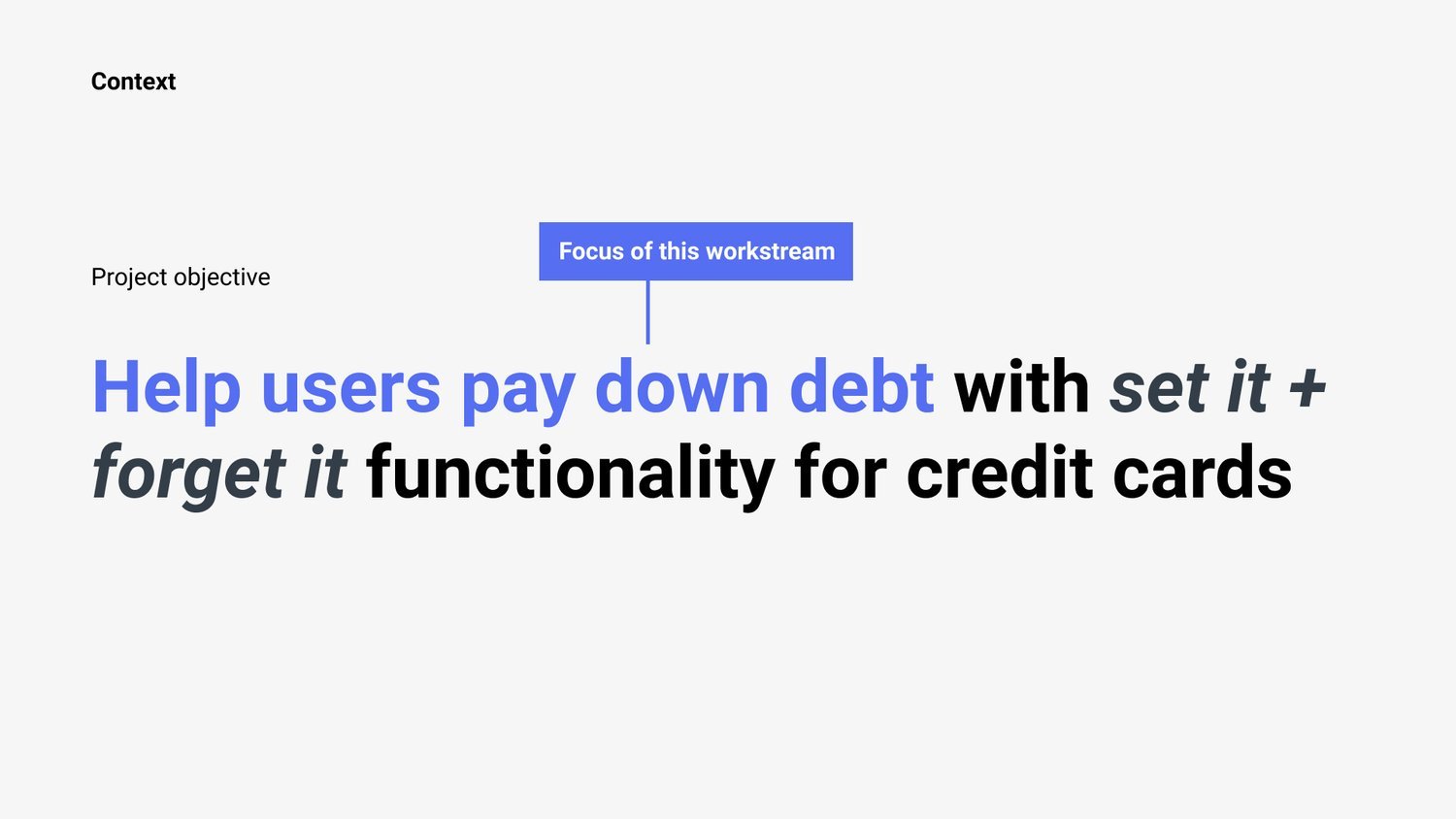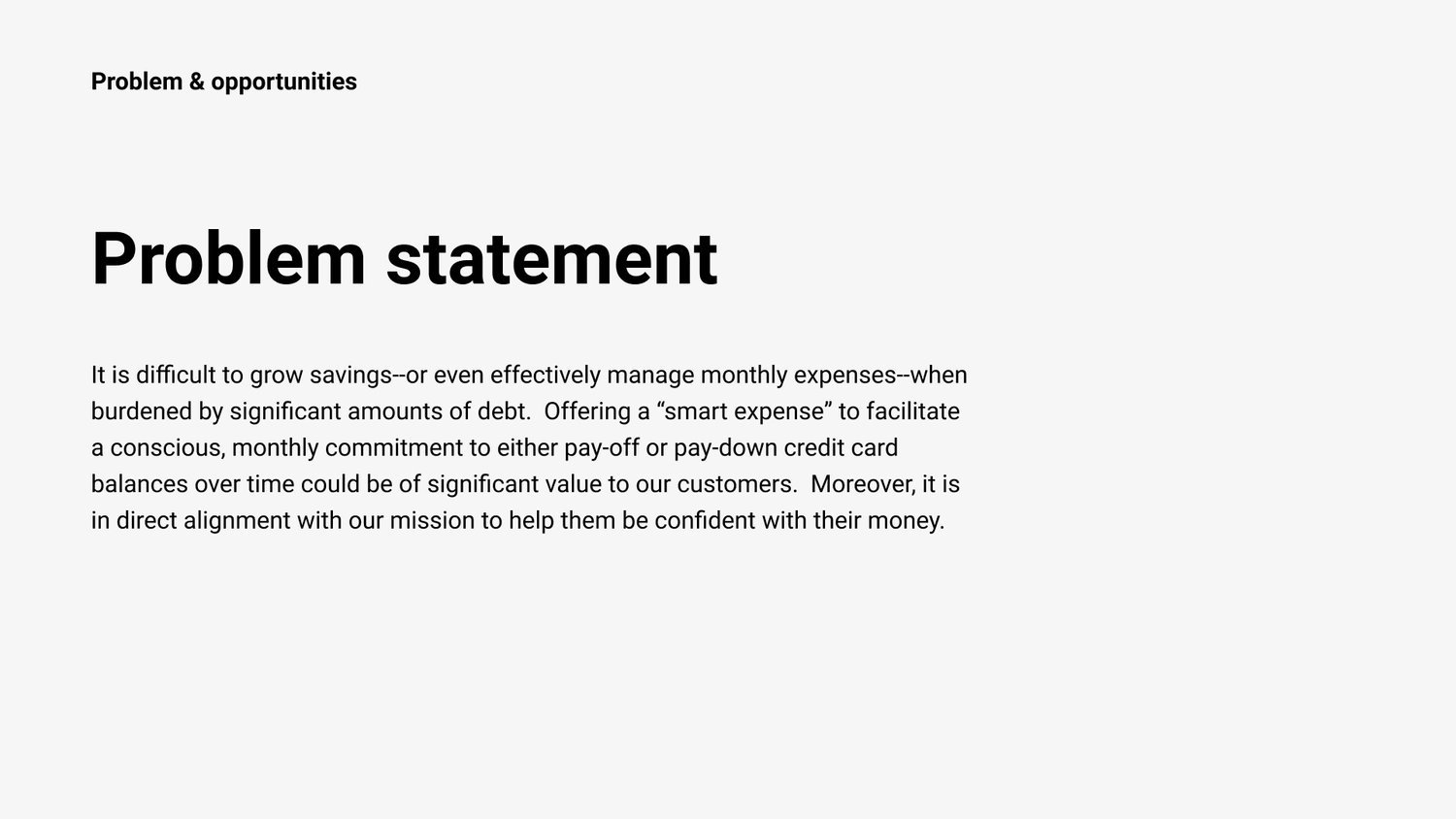
CASE STUDYCredit Card Expense
Simple - Portland, OR
Role: Lead Product Designer
Responsibilities: Design
Stakeholders: Entire org, Project Team including Engineering, QA + PM
This project was my welcome to Simple, which in many ways was a dream job. While the work around this concept of a Credit Card Expense had been started, it was in need of continued support + iteration. While learning the ins + outs of Simple users + the product itself I jumped into this unique functionality full steam. Months later we were delivering the first of its kind expense, which in Simple parlance was a kind of savings, attached to your credit card providing a ‘set it + forget it’ situation that gave users the best of both credit cards + debit cards.
Bring innovative design work that combines debti + credit benefits to life in the form of Credit Card Expense.
Take a project already underway to the finish line delivering high quality assets + tangible change for users.
Help users grow their financial confidence with improved credit card payment functionality.
Business goal
Introducing Credit Card Expense Feature for Simple Plus to Evaluate User Adoption and Risk Assessment
Simple aims to launch a credit card expense feature for the first 1000 users to evaluate its potential impact on user adoption and the value proposition of Simple Plus. By offering this unique budgeting feature, Simple seeks to differentiate itself from competitors and enhance the attractiveness of Simple Plus. Moreover, this initiative serves as an opportunity to explore using expense adoption behaviors as an alternative to traditional credit modeling, potentially assessing if Simple Plus customers using credit card expenses are less likely to default than non-users. This strategic move aligns with Simple's goal to innovate in the financial services sector and enhance customer experience while managing risk effectively.







User problem
Challenges in Distinguishing Between Funding Expenses and Paying Credit Card Balances
Users are finding it challenging to differentiate between funding regular expenses and making credit card payments, hindering their ability to effectively manage finances and reduce debt burdens. Offering a 'smart expense' feature that guides users in consciously committing to pay off or reduce credit card balances monthly aligns with the mission to empower users with financial confidence. This confusion creates a barrier to achieving savings goals and financial stability.
“The overview of all the credit card info is really helpful.”
“There shouldn’t be ANY confusion about how and when it gets paid. Make it super clear.”
Process
Exploration of Design Formats and 'Statement Gap' Problem
Simple's design team embarked on exploring various formats to showcase designs within the brand's clean and elegant design language. They created wireframes and prototypes to visualize design concepts effectively. Additionally, the team conducted an in-depth analysis of the 'Statement Gap' problem, focusing on reducing friction and enhancing efficiency through a thorough exploration process.
Solution
Enhancing Financial Confidence through Budgeted Savings for Credit Card Payments
The project aimed to boost users' financial confidence related to credit cards by facilitating regular, scheduled savings for their credit card payments. A novel approach was introduced, merging the benefits of debit and credit systems into a unified solution. By linking a savings account to a credit card and automatically matching every transaction with a corresponding savings allocation, users were empowered to proactively save for their credit card bill payments with ease and precision.
Impact
Enhancing User Trust and Decision Clarity in Credit Card Management
By prioritizing clarity within the design of credit card management, our focus on meeting deadlines and ensuring sufficient funding for payments has resulted in a significant increase in user trust. Providing users with the choice to select payment options beyond default selections like Statement Balance has not only elevated the decision-making process but also encouraged users to pay closer attention, thereby reducing the likelihood of missing deadlines.
Learnings
Balancing Automation and User Trust in Financial Services
The challenge of balancing user desire for 'set it + forget it' functionality with the need for user adoption and trust was a key takeaway. Users expect automation not only for creating savings but also for seamless payment integration. Building trust through transparent communication and user-friendly interfaces while gradually introducing automation features can help navigate user hesitancy towards financial automation tools.







